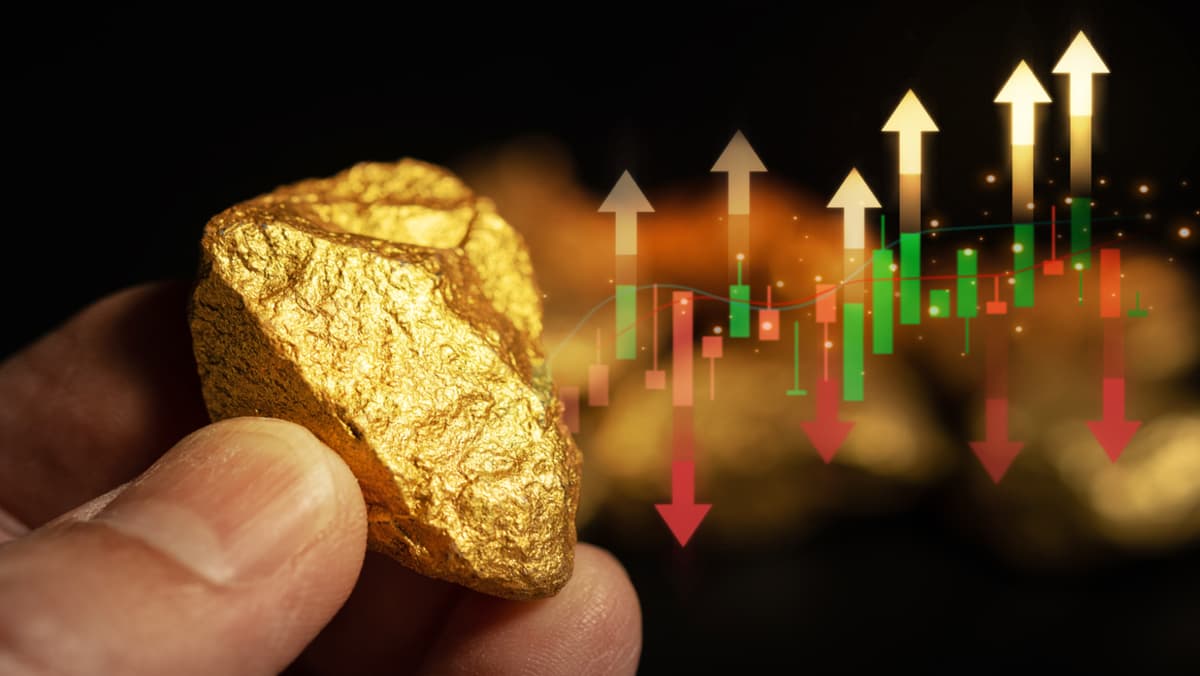
Thursday Aug 8 2024 07:08

5 min

2024 has been a banner year for the precious metal as it has been one of the best-performing assets, rising over 16% year to date and outpacing most major asset classes, according to the mid-year outlook of the World Gold Council (WGC).
The price of gold may attempt to retrace the decline from the monthly high ($2478) should it continue to close above the 50-Day SMA ($2369). Gold is continuing to serve its traditional role as a safe haven during the current instability in the equity markets. Meanwhile, the gold-to-silver ratio has reached its highest level in six months. Additionally, the markets are now anticipating 125 basis points of interest rate cuts by December. Prices of Gold posted decent gains around the $2,400 mark per ounce troy, leaving behind four consecutive daily declines. Silver, in the meantime, hovered around the $27.00 region per ounce, barely changing from the previous day’s close.
Last Friday’s weaker-than-expected nonfarm payrolls report caused a sharp decline in U.S. stocks, which subsequently triggered a sell-off in Asian and European equity markets as they opened for Monday’s trading session. The Nikkei, in particular, suffered significant losses, partly due to its deep liquidity and partly due to the recent shift in the Bank of Japan’s policy, along with the yen’s 12% appreciation against the dollar over the past month, she observed.
Gold initially followed risk assets lower but managed to recover and rise above support levels near $2,400 per ounce. However, O’Connell noted that the precious metal is still facing pressure.
With further strong support at previous swing lows between 2,294 and 2,287. A drop below 2,294 would indicate weakening momentum, while a fall below 2,287 would confirm a bearish breakdown from the consolidation peak. Notably, if the decline reaches the 2,312 target zone, it will align more closely with two prior retracements that saw declines of 6.7% and 6.3%.
Earlier this week, a bearish breakdown occurred below last week’s low of 2,370. A daily close below this level would confirm the weakness signaled by the breakdown. Since reaching a new record high of 2,431 in early April, gold has been trading within a broad consolidation pattern. It is typical for gold to test support near the lower boundary of this pattern before completing the retracement. If this scenario unfolds, the extended target for the declining ABCD pattern is 2,312, which is near the lower trendline of the consolidation pattern.

Gold has a long and storied history as a reliable store of wealth during times of economic strife, and according to an analysis of the yellow metal's largest price runs over the past 50 years, “The market now finds itself in a longer-lasting gold run than any since the U.S. fully abandoned the gold standard in August 1971.”
“Gold possesses several critical qualities that have solidified its reputation as a wise hedge against instability,” said Brad Chastain, director of education at U.S. Money Reserve. “Gold’s conductivity, corrosion resistance, and malleability give it intrinsic value, particularly in electronics. As a physical asset, gold has no counterparty risk, making it safer than some other financial instruments reliant on issuers or other parties.”
“The recent rise in gold prices amid political and economic instability is just the latest example of gold’s tendency to increase during periods of broader uncertainty,” he noted. “Gold prices rose significantly in the years following the U.S.’s departure from the gold standard in the early 1970s and continued to climb through the 'stagflation' of the late 1970s and early 1980s.”
He added, “Prices resumed their upward trend after the dot-com bubble burst and the recession of the early 2000s, and then surged following the Great Recession of 2008, as the federal government enacted expansionary monetary policies to stimulate the economy. Prices stayed high after the recession and have accelerated in recent years.”
Chastain observed that, due to the gains since the onset of the COVID pandemic, “The market is now experiencing a more prolonged gold rally than any period since the U.S. completely abandoned the gold standard in August 1971.”
When considering shares, indices, forex (foreign exchange) and commodities for trading and price predictions, remember that trading CFDs involves a significant degree of risk and could result in capital loss.
Past performance is not indicative of any future results. This information is provided for informative purposes only and should not be construed to be investment advice.
